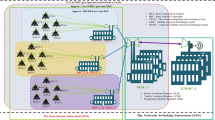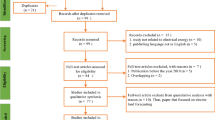Abstract
This paper assesses the impact of energy-efficient distribution transformers through the implementation of energy efficiency classes, as well as through mandatory standards that remove the worst transformers from the market. Energy-efficient distribution transformers can not only save about 1 % of all the electricity generated but can also save very large investments in power generation and transmission power systems. Technical solutions to reduce energy consumption of transformers are available, but the market penetration of high-efficient transformers is significantly lower than it could be. The paper analyses the main market and regulatory failures and identifies that the introduction of efficiency classes and minimum energy performance standards (MEPS) is the best way to foster energy performance in distribution transformers. Policies and measures supporting energy-efficient distribution transformers around the world are reviewed. The use of Ecodesign methodology do define possible transformer MEPS regulation is discussed for different types of distribution transformers, as well as the associated impacts. Sensitivity analysis in relation to key parameters (load factor and electricity prices) is analyzed. The energy saving potential and the environmental impacts are calculated until the year 2050 in the European Union, as well as at world level. The potential savings in the year 2050 represent about 35 TWh of electricity in Europe, equivalent to about four million tons of reduced CO2 emissions. For the world, the estimated impact in 2050 is about 450 TWh equivalent to about 180 million tons of reduced CO2 emissions.
















Similar content being viewed by others
Notes
COM (2006) 545 final
Ecodesign Directive Article 15, Point 2(ii).
MEEUP Methodology Report to the European Commission, Methodology Study Eco-design of Energy using Products, VHK, Delt, 28.11.2005.
References
Azuma, D., & Hasegawa, R. (2008). Audible noise from amorphous metal and silicon steel-based transformer core. 2008, IEEE TRANSACTIONS ON MAGNETICS, 44.
Bertoldi, P., Hirl, B., & Labanca, N. (2012). Energy Efficiency Status Report 2012- Electricity Consumption and EU-27. European Union: European Commission - Joint Research Centre - Institute for Energy and Transport, 2012.
Carlen, M. (2013). Responding to a changing world. Zürich: ABB Power Products, Transformers.
Colla, F. (2014). Power and Distribution transformers outlook on the energy market. s.l: ANIEnergia, 2014.
De Almeida, A. T., Martins, F., & Santos, B. (2013). Impact Assessment Implementing Directive 2009/125/EC of the European Parliament and of the Council: Ecodesign Requirements for Power, Distribution and Small Transformers. Coimbra: ISR-University.
Eide, A., Borg, N., & Toulouse, E. (2010). Comments on Eup Study:Lot 2 Distribution and Power Transformers. s.l. : CLASP Europe, 2010.
Energy Efficiency and Renewable Energy Office (EERE). (2011). Distribution Transformer Energy Conservation Standards. s.l. : U.S. Department of Energy, 2011.
EURELECTRIC. (2010). Power Statistics-2010 Edition-Synopsis. Brussels: Union of the Electricity Industry – EURELECTRIC – A.I.S.B.L.
European Commission. (2009a). Directive 2009/125/EC of 21 October 2009 establishing a framework for the setting of ecodesign requirements for energy-related products. s.l. Official Journal of the European Union, 2009.
European Commission. (2009b). Part III: Annexes to Impact Assessment Guidelines. s.l. : European Commission, 2009.
European Union. (2014). Commission regulation (EU) No 548/2014 of 21 May 2014 on implementing directive 2009/125/EC of the European parliament and of the council with regard to small, medium and large power transformers. s.l. Official Journal of the European Union, 2014.
Hammond Power Solutions. Technical Articles. Copper vs. Aluminum Windings. [Online] [Citação: 14 de 11 de 2014.] http://www.hammondpowersolutions.com/files/HPS-CoppervsAluminumWindings.pdf.
Hasegawa, R., & Azuma, D. (2008). Impacts of amorphous metal based transformers on energy efficiency and environment. Conway: Journal of Magnetism and Magnetic Materials-Elsevier.
IEA. (2012). World Energy Outlook 2012. [Online] 2012. [Citação: 2014 de June de 23.] www.worldenergyoutlook.org/publications/weo-2012/.
IEA-4E. (2014). Benchmarking report for distribution transformers. [Online] 12 de May de 2014. [Citação: 9 de June de 2014.] http://mappingandbenchmarking.iea-4e.org/shared_files/589/download.
Inagaki, K., et al. (2011). Amorphous Transformer Contributing to Global Environmental Protection. s.l. Hitachi Review, 2011.
Kulkarni, S. V. E., & Khaparde, S. A. (2012). Transformer engineering: design, technology, and diagnostics. s.l. : CRC Press, 2012.
Lebot, B., De Keulenaer, H., & Hurens, P.. (2003). Energy-efficient distribution transformers: a hidden opportunity for large scale energy savings. s.l. : ECEEE 2003 SUMMER STUDY – TIME TO TURN DOWN ENERGY DEMAND, 2003.
Letschert, V., et al. (2013). Energy Efficiency Potential for Distribution Transformers in the APEC Economies. s.l. Ernest Orlando Lawrence Berkeley National Laboratory, 2013.
Moses, A. J., et al. (2010). Contribution of Magnetostriction to Transformer Noise. s.l.: UPEC2010, 2010.
Olivares-Galvan, J. C., et al. (2009). Selection of copper against aluminium windings for distribution transformers. s.l. IET Electric Power Applications, 2009.
Opetuk, T., Zolo, I., & Dukic, G. (2010). Greening elements in the distribution networks 2010. Journal of Industrial Engineering and Management, pp. 353-369.
Pryor, L., Schlobohm, R., & Brownell, B. (2008). A Comparison of Aluminum vs. Copper as used in electrical equipment. s.l. : GE Industrial, 2008.
Scholand, M., et al. (2013). SEAD Distribution Transformers Report Part 4: Country Profiles for Internationally-Comparable Test Methods and Efficiency Class Definitions for Distribution Transformers. s.l. Super-efficient Equipment and Appliance Deployment, Clean Energy Ministerial, International Partnership for Energy Efficiency Cooperation, Collaborative Labeling and Appliance Standards Program, 2013.
Sumper, A., & Baggini, A. (2012). Electrical Energy Efficiency - Technologies and Applications. s.l. : John Wiley & Sons Ltd, 2012.
Targosz, R., et al. (2005). The potential for global energy savings from high efficiency distribution transformers. Brussels- Belgium: European Copper Institute.
UNEP & International Copper Association Southeast Asia Ltd. (2011). Energy Efficient Transformers - Technical Study Report. s.l. : Supporting Action on Climate Change through a Network of National Climate Change Focal Points in South-east Asia (SEAN-CC), 2011.
VITO & BIOIS. (2011). LOT2: distribution and power transformers. Belgium: European Commission DG ENTR unit B1, 2011. ENTR/2008/039.
Waide Strategic Efficiency Limited and N14 Energy Limited. (2014). PROPHET II: The potential for global energy savings from high-efficiency distribution transformers. s.l. : European Copper Institute, 2014.
Wuppertal Institute for Climate, Environment, Energy and SEEDT Partners. (2008). Policies and Measures Fostering Energy-Efficient Distribution Transformers. s.l. : EU-IEE Project - Strategies for development and diffusion of energy-efficient distribution transformers – SEEDT, 2008.
Acknowledgments
The findings in this paper results from the study “Impact Assessment study for Power, Distribution and Small Transformers “, for the European Commission in which we had contributions of European Commission, CLASP, T&D Europe, N14 Energy, CENELEC, Hitachi Metals Europe, LEONARDO ENERGY, Eureletric and Ricardo-AEA (UK).
Author information
Authors and Affiliations
Corresponding author
Rights and permissions
About this article
Cite this article
De Almeida, A., Santos, B. & Martins, F. Energy-efficient distribution transformers in Europe: impact of Ecodesign regulation. Energy Efficiency 9, 401–424 (2016). https://doi.org/10.1007/s12053-015-9365-z
Received:
Accepted:
Published:
Issue Date:
DOI: https://doi.org/10.1007/s12053-015-9365-z




